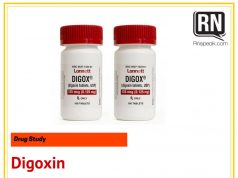Generic Name:Doxycycline Hyclate
Brand Name:Adoxa, Apo-Doxy , Doryx, Doxy, Doxy-Caps, Doxychel, Doxycin , Doxy-Lemmon, Monodox, Novodoxylin ,SK-Doxycycline, Vibramycin, Vibra-Tabs, Vivox
Classifications:antiinfective; antibiotic; tetracycline
Prototype:Tetracycline
Pregnancy Category: D
Availability
50 mg, 100 mg capsules, tablets; 200 mg injection
Actions
Semisynthetic broad- spectrum tetracycline antibiotic derived from oxytetracycline. More completely absorbed with effective blood levels maintained for longer periods and excreted more slowly than most other tetracyclines. Thus it requires smaller and less frequent dosing.
Therapeutic effects
Primarily bacteriostatic in effect. Similar in use to tetracycline (e.g., effective against Chlamydial and Mycoplasmal infections; gonorrhea, syphilis, rickettsia).
Uses
Similar to those of tetracycline, e.g., Chlamydial and mycoplasmal infections; gonorrhea, syphilis in penicillin-allergic patients; rickettsial diseases; acute exacerbations of chronic bronchitis.
Unlabeled uses
Treatment of acute PID, leptospirosis, prophylaxis for rape victims, suppression and chemoprophylaxis of chloroquine-resistant Plasmodium falciparum malaria, short-term prophylaxis and treatment of travelers’ diarrhea caused by enterotoxigenic strains of Escherichia coli. Intrapleural administration for malignant pleural effusions.
Route & dosage
Antiinfective
adult: PO/IV 100 mg q12 h on day 1, then 100 mg/d as single dose (max: 100 mg q12 h)
child: PO/IV 8 y, 4.4 mg/kg in 1–2 doses on day 1, then 2.2–4.4 mg/kg/d in 1–2 divided doses
Gonorrhea
adult: PO 200 mg immediately, followed by 100 mg h.s., then 100 mg b.i.d. for 3 d
Primary and Secondary Syphilis
adult: PO 300 mg/d in divided doses for at least 10 d
Travelers’ Diarrhea
adult: PO 100 mg/d during risk period (up to 2 wk) beginning day 1 of travel
Acne
adult: PO 100 mg q 12 h on day 1, then 100 mg q.d.
child: PO >8y and >45 kg 100 mg q 12 h on day 1, then 100 mg q.d.; >8 y and <45 kg, 2.2 mg/kg q 12 h day 1 then 2.2 mg/kg/d q.d.
Administration
Oral
Check expiration date. Degradation products of tetracycline are toxic to the kidneys.
Give with food or a full glass milk to minimize nausea without significantly affecting bioavailability of drug (UNLIKE MOST TETRACYCLINES).
Consult physician about ordering the oral suspension for patients who are bedridden or have difficulty swallowing.
Intravenous
PREPARE intermittentcontinuous: Reconstitute by adding 10 mL sterile water for injection, or D5W, NS, LR, D5/LR or other diluent recommended by manufacturer, to each 100 mg of drug. • Further dilute with 100–1000 mL (per 100 mg of drug) of compatible infusion solution to produce concentrations ranging from 0.1 to 1 mg/mL.
ADMINISTER intermittentcontinuous: IV infusion rate will usually be prescribed by physician. • Duration of infusion varies with dose but is usually 1–4 h. • Recommended minimum infusion time for 100 mg of 0.5 mg/mL solution is 1 h. Infusion should be completed within 12 h of dilution. • When diluted with LR or D5/LR, infusion must be completed within 6 h to ensure adequate stability. • Protect all solutions from direct sunlight during infusion.
- Store oral and parenteral forms (prior to reconstitution) in tightly covered,–resistant light containers at 15°–30° C (59°–86° F) unless otherwise directed. • Refrigerate reconstituted solutions for up to 72 h. After this time, infusion must be completed within 12 h.
Adverse effects
SpecSenses: Interference with color vision.
GI: Anorexia, nausea, vomiting, diarrhea, enterocolitis; esophageal irritation (oral capsule and tablet).
Skin: Rashes, photosensitivity reaction.
other: Thrombophlebitis (IV use), superinfections.
Nursing implications
Assessment & Drug Effects
- Report sudden onset of painful or difficult swallowing promptly to physician. Doxycycline (capsule and tablet forms) is associated with a comparatively high incidence of esophagitis,especially in patients >40 y.
- Report evidence of super infections
Patient & Family Education
- Take capsule or tablet forms with a full glass (240 mL) of water to ensure passage into stomach and prevent esophageal ulceration. Avoid taking capsule or tablet within 1 h of lying down or retiring.
- Avoid exposure to direct sunlight and ultraviolet light during and for 4 or 5 d after therapy is terminated to reduce risk of phototoxic reaction. Phototoxic reaction appears like an exaggerated sunburn. Sunscreens provide little protection.
- Do not breast feed while taking this drug.








